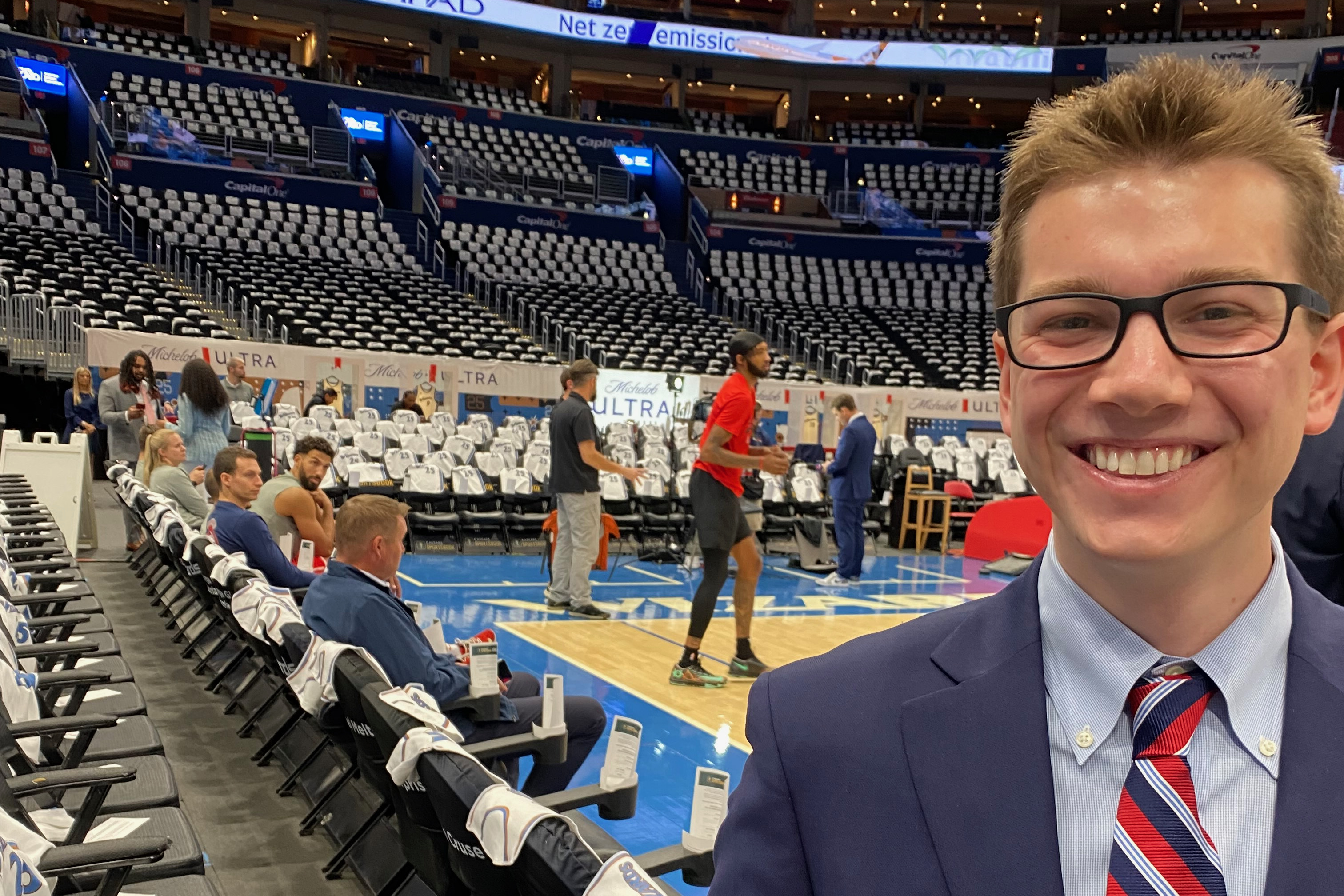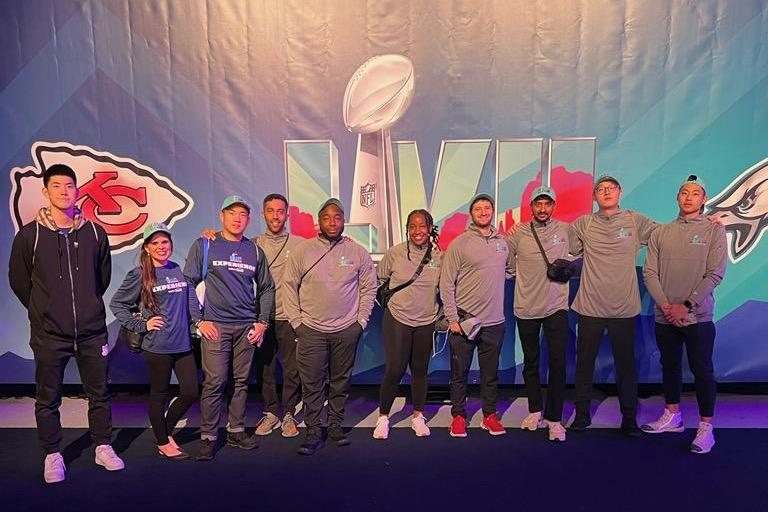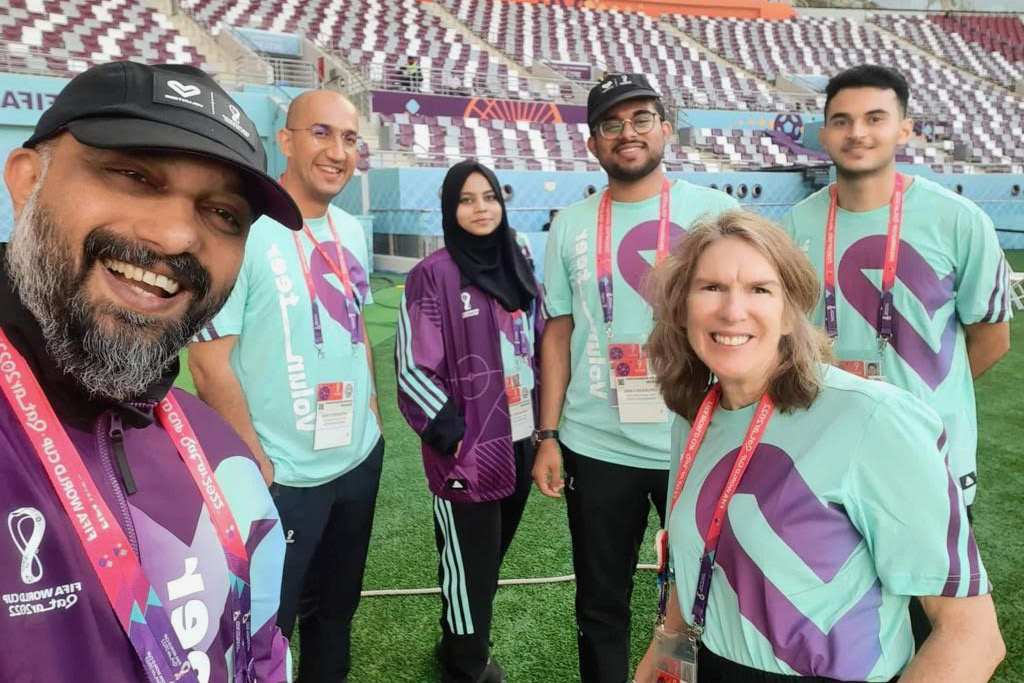It’s in the late innings of a Friday matinee baseball game at iconic Wrigley Field in Chicago, where the hometown Cubs are trying to hold off the Colorado Rockies. At that moment, they are clinging to the sixth and final National League Wild Card spot with just over a week left in the regular season.
Perched in his office at team headquarters adjacent to the third-base grandstand, George Washington University alumnus Connor Rosenberg, B.B.A. ’19, like many Cubs fans that afternoon, is locked into every pitch, each one with seemingly more postseason implication than the next.
But while those in the ballpark or watching on the team’s home broadcast on Marquee Network are living in the moment and holding their breath with every delivery to home plate, Rosenberg is watching with an eye for the future. He’s watching for pitching patterns such as spin rates and exit velocity from opposing hitters to identify any tactical advantage.
Even with a 162-game marathon regular season schedule, every pitch can matter, and Rosenberg plays a big role in making sure they all count during the season and beyond.
The business analytics graduate is an analyst in the Cubs Baseball Analytics department, using the mathematical and statistical modeling and quantitative research skills he honed at GW to help the Cubs maximize their game plans throughout the season. From game planning to player development and draft strategy, he and his colleagues comb through billions of rows of data to extract nuggets of useful information that coaches and executives can turn into on-field success—such as an eventual 6-0 win over the Rockies that afternoon.
That work, whether identifying defensive positioning that saved a run in a close win, helping to prevent a tired pitcher from taking the mound on a given night or even as far back as scouting a diamond-in-the-rough prospect that has been a surprise contributor to the team has been extra important this season. The Cubs enter the final weekend of the regular season as one of four teams fighting for the final two Wild Card spots in the National League postseason, which begins Tuesday. Every little thing has mattered.
His duties entail a little bit of everything, from pitch-type classification to forecasting player skillsets for the draft to even the nittiest of gritty details such as tracking the exit velocity of a ball and controlling for weather and wind conditions—all while using math he learned in Associate Professor Joshua Landon’s regression analysis course.
“Probably the most accessible way to say it is that my job is to take the game and estimate and project every single aspect of it,” Rosenberg said. “It really is all-encompassing.”
Rosenberg, who was GW Business’ Most Outstanding Student in 2019, has long loved sports, and being a member of an Alantic-10-winning men’s water polo team at GW further cemented that. After working a few data analysis jobs after graduation, in addition to earning a master’s degree in statistics at U.C. Davis, he landed as a data science consultant with the NBA’s Sacramento Kings in 2020 before venturing into a sport that has been the ringleader in the analytics revolution.
Made popular by the book and later Brad Pitt film “Moneyball,” baseball’s analytic movement has seen teams rely more and more on advanced stats and data to calculate the most favorable matchups, pitch optimization, fielder’s positioning and maximization of a player’s skillset.
While there’s been a healthy debate about whether teams rely on these numbers too much and thus removing some of the human element out of the game, Rosenberg said the Cubs have a healthy mix and that, like in any successful business, communication is key.
“I really think it's a give and take between both sides where the coaching staff or the people who are more focused on working with the players are coming to us, or we're coming to them, and we're teaching them about the models and what the probability means, and then they're there to interpret that on the field,” Rosenberg said.
Rosenberg pointed to an example this season where the coaching staff asked about how aggressive they should be sending runners home to try and score from second or first base on hits to the outfield. Using their statistical models, his analytics team identified situations during the game where it was advantageous to send the runner and when it was not.
“There’s a question-and-answer side of it where I think we do a really good job of working with all the other coaches and other departments fielding those questions, testing them and seeing if there is anything to the question,” he said. “If we can find an effect, then fantastic, and we’ll find a way to leverage that.”
For the record, entering play on Sept. 26, the Cubs were the fourth-best team in all of baseball when a runner on second scored on a single, plating 116 runs in that scenario. Considering they made the playoffs by one game, those extra runs throughout the course of the season paid dividends.
It’s a tense time of year for fans, players and front office members alike. But as the old saying goes, pressure is a privilege, and Rosenberg and the Cubs are relishing in the moment.
“It’s equal parts exciting and equal parts stressful,” he said. “It makes every game incredibly more fun, and it’s not lost on me that every single day I walk off the train and work at Wrigley Field. That’s still a surreal experience. So, it’s a lot of fun, a lot of work and a lot of stress, but I can’t think of a better way to spend my September.”
And he hopes much of his October as the Cubs chase a second World Series championship in the last seven years.





